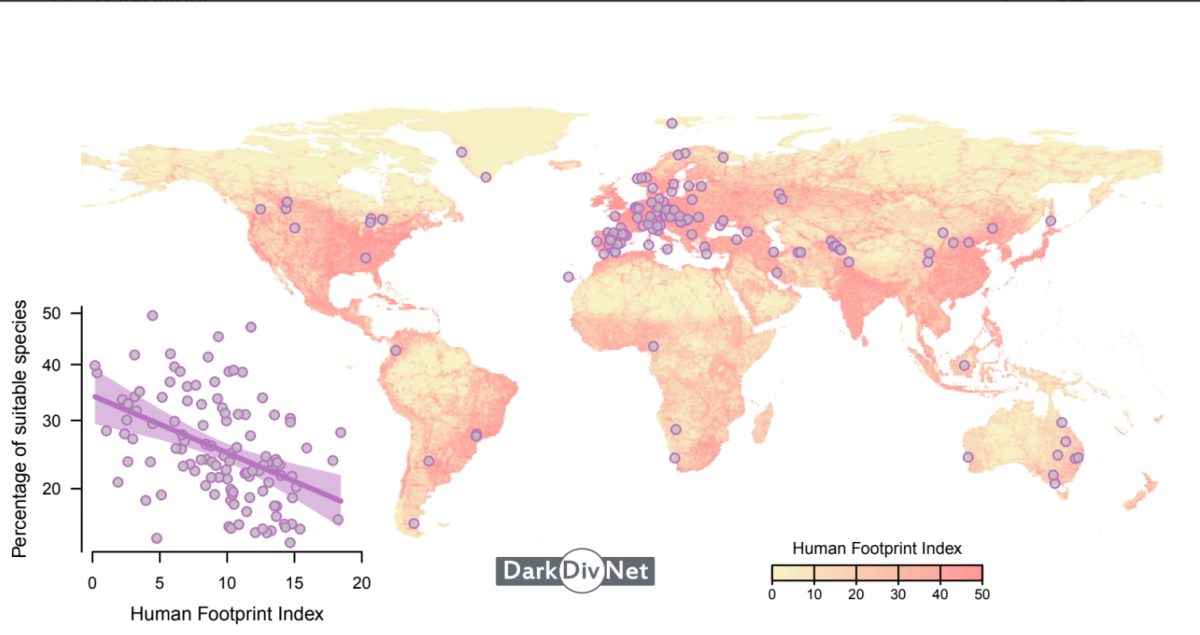New paper in Nature about dark diversity

One of the main research topics of our workgroup has been dark diversity, and in 2019 we started the DarkDivNet coordinated research network. The goal of the network was to bring together researchers who can explore dark diversity in their regions. Although dark diversity cannot be directly observed, it can be estimated through detailed vegetation analysis.
Now, the first paper from the DarkDivNet, led by Meelis Pärtel, has been published in the journal Nature! In this study we explored how human footprint index affects both observed and dark diversity across different regions of the world. We found that with increasing human impact, the community completeness decreases or, in other words, fewer suitable species are present in a community and ecosystem. In areas with low human footprint (such as forests in Canada or grasslands in Mongolia), at least one-third of all potentially suitable plant species are present. However, in areas with high human footprint (such as Central Europe), only one out of five potentially suitable species is actually found.
Nearly 200 scientists contributed to the study, sampling 5500 vegetation plots across 119 regions worldwide.
Pärtel, M., Tamme, R., Carmona, C.P. et al. Global impoverishment of natural vegetation revealed by dark diversity. Nature (2025).